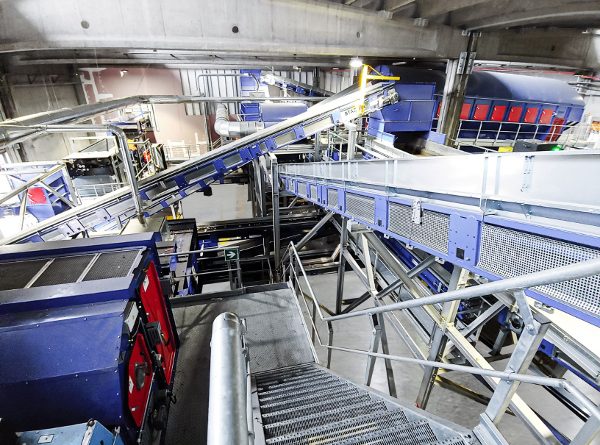Stadler designs and builds new G.A.I.A. and Iren Ambiente sorting plants in Italy
G.A.I.A. Spa and Iren Ambiente (which holds 45% ownership of G.A.I.A.) called on the German company Stadler, specialised in the planning, production and assembly of turnkey recycling and sorting plants, to design and build new recycling plants in Italian Asti and Parma.
The requirements for the two plants were different: sorting of plastic packaging from separate collection in Asti, and sorting of plastic and paper/cardboard in Parma. Inaugurated last October, the new plant for the sorting of plastic and metal packaging from separate waste collection plays an important role in waste management in northern Italy. The result of a 10 million euro investment, it will be able to process 50,000t/a of material from separate waste collection.
The G.A.I.A. plant will process materials coming from the Asti basin, the Iren Group (Turin, Genoa, Piacenza, Reggio Emilia), Val d’Aosta and others who may request its services. Once processed and cleaned, the materials coming from the separate collections will be delivered to the National Consortia for the recovery of packaging, which will transform them into secondary raw materials and reintroduce them into the production cycles. The new plant is equipped with modern technologies in line with the Industry 4.0 objectives of the industrial plan, and the machines support the work of the manual sorting operators, resulting in a high quality product.
The plant consists of a feeding and pre-sorting section, a mechanical and optical sorting line, a sorting cabin for manual selection of the bulky products and a storage and baling line. A drum screen performs the first selection according to size, separating the materials into three streams. The main material stream, with sizes from 50 to 350mm, is sent to the main sorting line, consisting of:
- 10 optical separators to sort out plastic products
- 1 wind shifter system to improve the 3D – 2D separation
- 2 magnetic separators to remove ferrous metals
- 1 eddy current separator to remove non-ferrous metals
- 1 fine screen with 20 mm mesh to sift fine residue
- 1 STT5000 ballistic separator and 1 STT2000 ballistic separator to increase the quality of plastic recirculation inside the plant
- 1 bottle piercer to recover bottles even if they are filled with liquids
All the sorted plastics are stored in reversible bunkers. This material then feeds two independent pressing lines with special balers designed for plastics. At the end of the process, the output materials are transparent PET, coloured PET, light blue PET, HDPE, PP, Mixed PE+PP, LDPE+PP film, bulky plastics (4 different products), residue, fine residue, non-ferrous metals and ferrous metals.
The new Iren Ambiente plant in Parma
The Parma plant, soon to be completed and inaugurated, is designed to treat two different streams of material from the separate collection of paper and plastic. It is claimed to be one of the most advanced plants in Italy for sorting paper and cardboard. For this plant, Stadler designed and built two highly integrated sorting lines that achieve a very high spatial efficiency by sharing the baling system. The plastic sorting line, which has a capacity of 9 t/h, processes PET+HDPE+PP bottles, PE+PP film, bulky plastics, mixed plastic packaging, non-ferrous and ferrous metals, while the paper sorting line, with a capacity of 20t/h, processes cardboard, mixed paper and deinking.
The two lines have different input areas but share the same output section and baling line. Each line consists of a feed section, a section for mechanical and optical sorting, a sorting cabin for manual sorting of bulky material and a storage and baling line. In the plastic sorting line, once the bulky waste in the pre-sorting cabin has been removed, the industrial waste can be sent to a shredder. A big drum screen performs the first selection based on the size of the material (bulky, medium and fine).
The bulky fraction is sent directly to the sorting cabin, where operators sort it into three different fractions. The main stream, of medium sized material (50-380mm), is fed to an STT5000 ballistic separator which divides the products according to their ballistic and weight characteristics into fine, 3D (heavy and/or rolling objects) and 2D (flat and light objects) fractions.
All fractions then pass through the plant where the following machines are located:
– 3 optical separators to sort the different types of plastics
– 1 wind shifter system to improve 2D – 3D separation
– 1 magnetic separator to remove ferrous metals
– 1 eddy current separator for the removal of non-ferrous metals
Photo: Sorting plant in Asti, Italy

